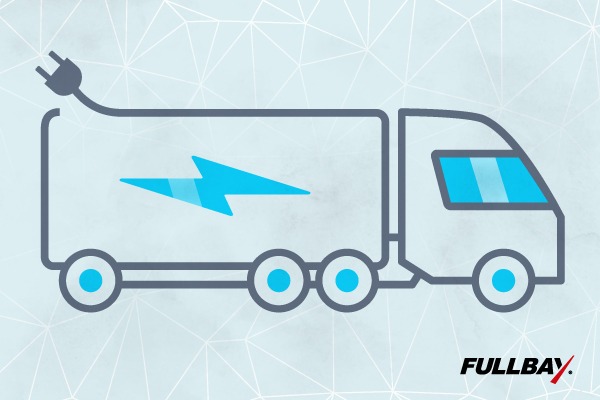Electrified: The Details on California’s New Ruling

As Bob Dylan once crooned, “The times they are a-changing.”
Improvements in technology have led to huge shifts in how we operate at work and in our daily life. For a little while, that technology seemed to largely bypass the diesel area; sure, we got alternative diesel and biodiesel, but the trucks themselves remained largely the same while passenger cars made this shift toward hybrid and electric models.
Not anymore.
California, spurred on by both concerns around climate change and reports of the terrible air quality in communities surrounding large distribution centers, recently passed new regulations that will change how trucks are manufactured and sold within the state. Other states quickly jumped on the bandwagon.
But what is this ruling, and what does it mean for you, the repair shop owner?
Let’s break it down.
WHAT’S THIS RULING ABOUT, ANYWAY?
To make a long story short, California wants to reduce emissions by a lot. This desire resulted in a new ruling requiring more electric trucks to be sold starting in 2024. That’s just the stepping stone to more elaborate plans: By 2045, the state wants all new trucks sold within its borders to be zero-emission.
Why the gap between dates? Right now, electric trucks make up less than 1% of the market. By requiring that manufacturers build more, California is trying to create a market for them.
As you might imagine, response to the ruling has been mixed. Companies like Tesla (which is working on its own electric trucks) are in favor of it. The Truck and Engine Manufacturers Association remains skeptical, citing a concern that there aren’t enough charging stations scattered throughout the state for this ruling to really ever be enforced.
But California isn’t alone in its efforts. As of today, 14 other states and Washington, D.C., formed a loose alliance (the official term is “memorandum of understanding”). They’ll work together to “accelerate the electrification of trucks and buses” and generally push to get more electric vehicles on the road.
The states involved are:
- Connecticut
- Colorado
- Hawaii
- Maine
- Maryland
- Massachusetts
- New Jersey
- New York
- North Carolina
- Oregon
- Pennsylvania
- Rhode Island
- Vermont
- Washington
WHY DOES IT EVEN MATTER?
If everything works out the way the regulation board wants, by 2045 you won’t be able to sell a regular diesel truck in California. It’s very likely the other states on that list won’t allow it either.
This is going to impact everyone: manufacturers, drivers, fleet managers, and repair shops. Manufacturers will be required to produce lower- or zero-emission vehicles. Fleet managers will have to purchase them. Repair shops will maintain and repair them. Drivers will drive them.
You get the idea.
If it works the way it’s intended, it’ll be a huge step in cutting down on air pollution.
WHEN WILL THIS HAPPEN?
As noted above, California is rolling it out in phases – the first phase of which is to get more of these electric trucks available for purchase in 2024.
The agreement between the 15 states and D.C. indicates they want at least 30% of vehicles sold by 2030 to be zero-emission. By 2050, “100% of new large pickup trucks and vans, delivery trucks, box trucks, school and transit buses, and big rigs [will] be zero emissions.”
In short, it’s ambitious, but it’s not going to happen overnight.
ELECTRIC TRUCKS ARE HERE ALREADY
Yes, the legislative work is new, but electric trucks aren’t going to sneak up on you while you’re changing a battery. They’re already on the road.
Take the Lightning Electric Ford F-550. It’s got the equivalent of about 240 horsepower and a range of more than 100 miles. No, you’re probably not going to take it across the country on a single charge, but it’s more than enough for quick trips around a city.
Lightning, by the way, will also install its electric drivetrain into existing vehicles should a fleet manager want to make the conversion.
WHY DOES THIS MATTER TO REPAIR SHOPS?
It’s going to affect your customers. Therefore it will affect you.
You might not feel the impact right now, or even in the next year. But electric and low/zero-emission trucks are coming, and they’re going to need maintenance and repairs just like the diesel trucks you’re used to. Some things, like brakes and trailer hitches and chassis work, will likely need the same work they always have. But the new electrical systems and modules – well, few techs have dealt with those before.
As time rolls on, more and more of these new vehicles will be out on the road. By 2030 – that’s just 10 years off – and 2045, it’s entirely possible you’ll be repairing and maintaining more electric trucks than regular diesels.
Your techs will need training to work on those trucks. You may need new software or equipment to interface with them. There will likely be financial cost involved.
IS THIS EVEN POSSIBLE?
We wonder that, too.
There is opposition to the new rules. Numerous groups representing the industry have expressed concerns over the lack of infrastructure to support electric trucks. Where are the charging stations? How are manufacturers supposed to move forward with development when many of them are running at reduced capacity due to the pandemic? If an electric Class 8 doesn’t have the same range as a diesel Class 8, and there aren’t enough charging stations on its route to keep it moving, can fleets really be forced to purchase them?
And so on and so forth.
All good questions, and there’s plenty more to come. All we can say is we’ll keep you posted.
HOW CAN YOU GET READY
We’ve already got a shortage of diesel technicians. Is adding electric work to that problem going to exacerbate things?
Possibly.
Or it might not.
We actually aren’t trying to be snarky here. Yes, electric work is a whole new ballgame. Any tech dealing with electric trucks needs to know how to deal with high voltage. There may be room for existing electricians to broaden their skills and step into the role of electric truck tech.
But what about the techs you’ve already got? Yes, they can learn how to work on electric trucks. If you want to start getting ahead, look into classes for them. You can also turn toward the manufacturers themselves – they want people to be able to work on their trucks. As an example, Volvo has teamed up with a couple of colleges to teach people how to work on their electric vehicles.
In short: Keep an eye on the news, get your staff and yourself trained as you can. You’ve got time.
WHERE DO WE GO FROM HERE?
Let’s be blunt: There’s a lot going on right now, both in the industry and in the world.
California’s new rules may face legal challenges (look what happened with AB5). The actual timeline may not be as aggressive as originally planned. There may be an interim where we turn to newer diesel technologies as a stopgap between diesel and full electric.
We do think it’s safe to say full electric trucks are coming at some point in the future. Maybe it’ll be sooner. Maybe it’ll be later. But it never hurts to keep up with what’s going on, and touch up your skills (and the skills of your crew) as you can.
We’ll keep an eye on the situation and update you as we learn more. In the meantime, keep calm and keep trucking on!

